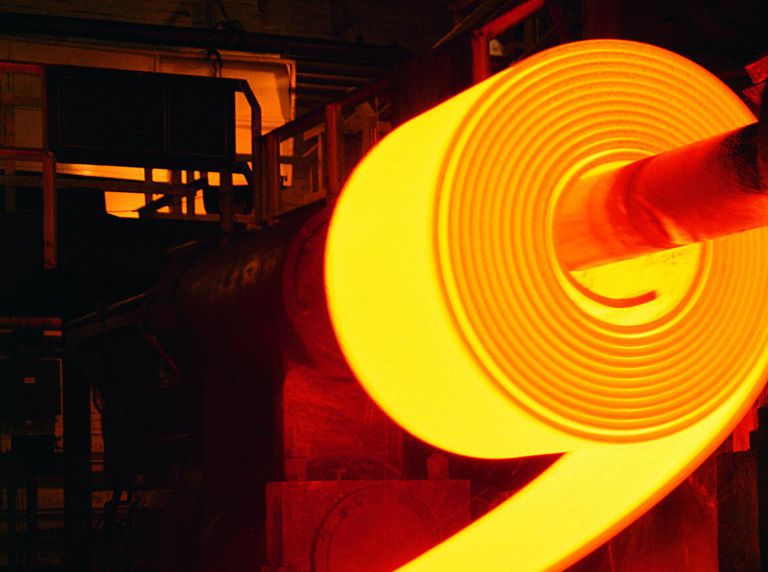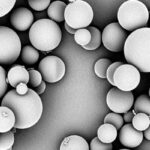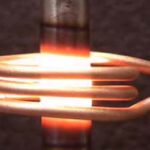Is a process done subsequent to quench hardening. Quench-hardened parts are often too brittle. This brittleness is caused by a predominance of Martensite. This brittleness is removed by tempering. Tempering results in a desired combination of hardness, ductility, toughness, strength, and structural stability. Tempering is not to be confused with tempers on rolled stock-these tempers are an indication of the degree of cold work performed.
The mechanism of tempering depends on the steel and the tempering temperature. The prevalent Martensite is a somewhat unstable structure. When heated, the Carbon atoms diffuse from Martensite to form a carbide precipitate and the concurrent formation of Ferrite and Cementite, which is the stable form. Tool steels for example, lose about 2 to 4 points of hardness on the Rockwell C scale. Even though a little strength is sacrificed, toughness (as measured by impact strength) is increased substantially. Springs and such parts need to be much tougher — these are tempered to a much lower hardness.
 Tempering is done immediately after quench hardening. When the steel cools to about 40 ºC (104 ºF) after quenching, it is ready to be tempered. The part is reheated to a temperature of 150 to 400 ºC (302 to 752 ºF). In this region a softer and tougher structure Troostite is formed. Alternatively, the steel can be heated to a temperature of 400 to 700 ºC (752 to 1292 ºF) that results in a softer structure known as Sorbite. This has less strength than Troostite but more ductility and toughness. The heating for tempering is best done by immersing the parts in oil, fortempering upto 350 ºC (662 ºF) and then heating the oil with the parts to the appropriate temperature. Heating in a bath also ensures that the entire part has the same temperature and will undergo the same tempering. For temperatures above 350 ºC (662 ºF) it is best to use a bath of nitratesalts. The salt baths can be heated upto 625 ºC (1157 ºF). Regardless of the bath, gradual heating is important to avoid cracking the steel. After reaching the desired temperature, the parts are held at that temperature for about 2 hours, then removed from the bath and cooled in still air.
Tempering is done immediately after quench hardening. When the steel cools to about 40 ºC (104 ºF) after quenching, it is ready to be tempered. The part is reheated to a temperature of 150 to 400 ºC (302 to 752 ºF). In this region a softer and tougher structure Troostite is formed. Alternatively, the steel can be heated to a temperature of 400 to 700 ºC (752 to 1292 ºF) that results in a softer structure known as Sorbite. This has less strength than Troostite but more ductility and toughness. The heating for tempering is best done by immersing the parts in oil, fortempering upto 350 ºC (662 ºF) and then heating the oil with the parts to the appropriate temperature. Heating in a bath also ensures that the entire part has the same temperature and will undergo the same tempering. For temperatures above 350 ºC (662 ºF) it is best to use a bath of nitratesalts. The salt baths can be heated upto 625 ºC (1157 ºF). Regardless of the bath, gradual heating is important to avoid cracking the steel. After reaching the desired temperature, the parts are held at that temperature for about 2 hours, then removed from the bath and cooled in still air.


